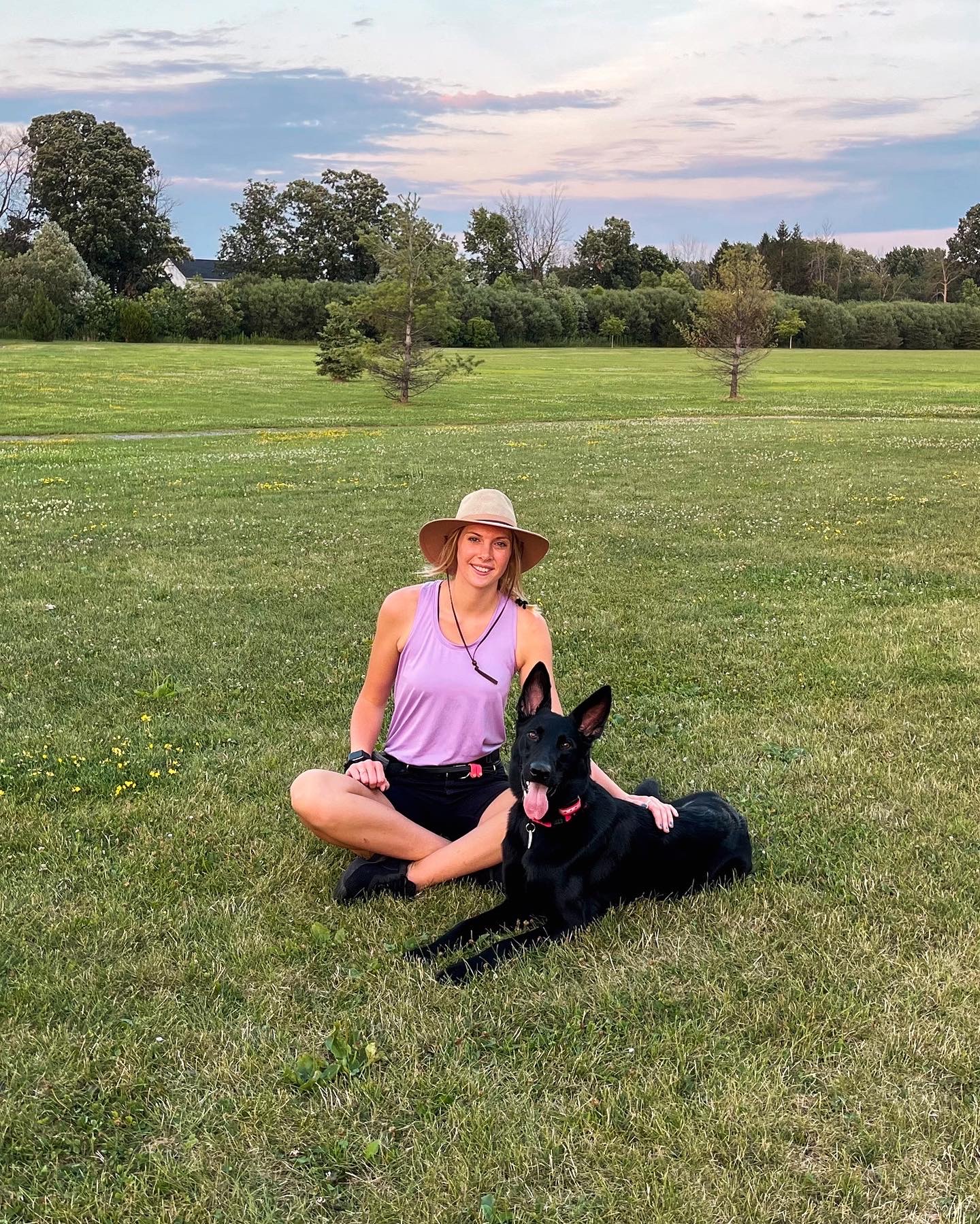What Was My Breed Bred For?
- Bailee Smalt

- Oct 19, 2022
- 4 min read
Updated: Jul 21
Understanding Breed Purpose to Better Train and Care for Your Dog
Ever wonder why your Golden Retriever won’t stop stealing socks? Why your Aussie herds your kids like they’re sheep? Or why your German Shepherd barks at every stranger at the door?
Believe it or not, these dogs weren’t just bred to be your snuggle buddy on the couch — they were created for specific jobs.
Every breed has its own history, purpose, and drive. Understanding your dog’s original job can help you train more effectively, provide better enrichment, and even avoid common behavioral issues. It won’t fix everything — but it can absolutely help you work with your dog, not against them.

A Quick History Lesson
Although some scientists believe humans began domesticating dogs 40,000 years ago, National Geographic reports that:
“Sometime between 10,000 and 32,000 years ago, humans began domesticating wolves, possibly somewhere in Southeast Asia.”
Dogs developed natural instincts along the way, including prey drive (chasing, digging, chewing) and pack drive (desire for structure and social relationships).
So how did we get from wolves to man’s best friend?
One theory suggests it started with a friendlier wolf carrying a genetic mutation. Over time, this “friendly gene” was passed down and amplified.
According to the New York Times:
“A team of researchers reported that the friendliness of dogs may share a genetic basis with a human disease called Williams-Beuren syndrome.”
This gene may be part of what separates dogs from wolves — and from other animals.
Why Breeds Were Created
There are over 200 AKC-recognized breeds today, and most were bred with specific jobs in mind. Below, you’ll find the seven main breed categories, along with characteristics, toy suggestions, best outlets, and safety cautions.
⚠️ Note: Always supervise your dog with toys. Avoid items they can destroy or swallow. For more guidance, read our upcoming blog: “What Toy Is Best For My Dog?”
Guard Dogs

Guard dogs were developed to protect livestock, homes, and territory from predators and intruders. These dogs often worked independently and were expected to make decisions without direction from people.
Examples: Great Pyrenees, Rottweiler, Doberman, Anatolian Shepherd
Traits: Independent, loyal, territorial, protective
Play Style: Body slamming, chasing, may play rough, prefers wrestling-style games
Likes Water? Sometimes, if exposed positively
Best Outlets: Obedience, hiking, pulling sports
Best Toys: Ropes, chew toys, durable tug toys
⚠️ Caution:
Early socialization is essential. Without it, these dogs may become reactive, overprotective, or aggressive.
Gun Dogs

Gun dogs were bred to work alongside hunters to locate, flush out, retrieve, or track birds and small game — often in water or thick brush.
Examples: Labrador Retriever, Golden Retriever, Spaniel, Setter, Poodle
Traits: Social, eager to please, energetic
Play Style: Chasing, retrieving, neck biting (playfully)
Best Outlets: Fetch, dock diving, hikes, scent work
Best Toys: Bumpers, flirt poles, floating toys
Likes Water? Absolutely
⚠️ Caution:
Avoid high-impact play before growth plates close (around 18 months). Some breeds (e.g., Weimaraners) are prone to bloat.
Herding Dogs

Hearding dogs were developed to control the movement of livestock, using eye contact, stalking, nipping, barking, or boundary patrolling. Some herders also protected flocks from predators.
Examples: Border Collie, Australian Shepherd, GSD, Belgian Malinois
Traits: Intelligent, alert, driven, loyal
Play Style: Stalking, intense eye contact, chasing
Best Outlets: Agility, obedience, trick training, herding balls
Best Toys: Jolly balls, flirt poles, puzzle feeders
Likes Water? Usually, if introduced early
⚠️ Caution:
Without structured activity, they often try to herd people or other pets. May bark excessively or become reactive.
Scent Hounds

Bred to track scents over long distances, these dogs helped hunters locate animals like raccoons, foxes, or deer. Some also alerted hunters with a distinctive baying bark.
Examples: Beagle, Bloodhound, Coonhound, Basset Hound
Traits: Independent, determined, scent-driven
Play Style: Chasing, exploring, sniffing games
Best Outlets: Scent work, sniff walks, nose games
Best Toys: Treat puzzles, sniff mats, ropes
Likes Water? Some, like Bloodhounds, enjoy it
⚠️ Caution:
Strong scent drive can override training — secure fences and recall are a must. Easily bored without sniffing outlets.
Sight Hounds

Sight hounds were bred for speed and vision — to chase down prey like rabbits, deer, or even wolves. Their wide-set eyes give them a 270° field of view, perfect for detecting movement at great distances.
Examples: Greyhound, Whippet, Borzoi, Irish Wolfhound
Traits: Fast, quiet, visual, reserved
Play Style: Zoomies, short bursts, pouncing
Best Outlets: Sprints, fetch, lure coursing
Best Toys: Soft fetch toys, flirt poles
Likes Water? Usually no, temperature sensitive
⚠️ Caution:
Avoid pairing them with physical wrestlers. They often prefer calm environments and dislike cold or rough surfaces.
Terrier Breeds:

Terriers were bred to hunt and kill vermin, dig into burrows, and protect homes or barns. Larger terriers were even used for bull-baiting or as early protection dogs.
Examples: Jack Russell Terrier, Bull Terrier, Staffy
Traits: Feisty, determined, high-prey drive
Play Style: Wrestling, tugging, chasing
Best Outlets: Scent games, obedience, fetch
Best Toys: Flirt poles, ropes, chew toys
Likes Water? Many do
⚠️ Caution:
Strong-willed and persistent — without boundaries, they can become bossy, barky, or destructive. Always supervise rough play.
Companion and Toy Breeds:

Unlike other groups, toy breeds were bred primarily for companionship and warmth — especially for royalty and nobility. Some also hunted small vermin in tight spaces.
Examples: Papillon, Chihuahua, Pekingese, Pomeranian
Traits: Affectionate, people-focused, alert
Play Style: Gentle chasing, pawing, short bursts
Best Outlets: Trick training, agility, cuddles
Best Toys: Plush toys, hide-a-squirrel, treat puzzles
Likes Water? Rarely
⚠️ Caution:
Require patient potty training. May bark at anything if not socialized early. Benefit from boundaries just like big dogs.

Even if your dog is a mix or rescue, knowing their dominant breed traits can help you:
Provide proper physical and mental outlets
Understand and prevent unwanted behaviors
Create more meaningful training and play sessions
Training becomes easier when we work with a dog’s instincts — not against them.

Comments